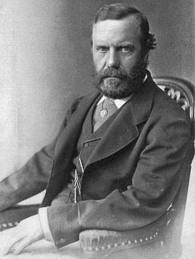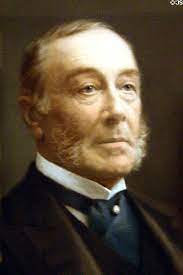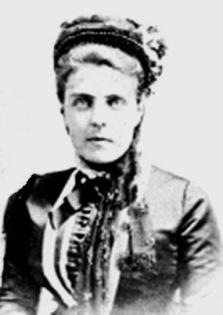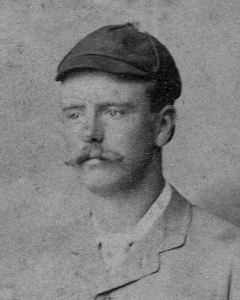Family Ties.

The Common Bond
Claes Maartenszen van Rosenvelt came to New Amsterdam around 1640, about the time Peter Stuyvesant was its governor. He was not a wealthy man. He did not come for religious freedom. He did not come to escape hardship. He came for the promise of opportunity – which he found in what became New York.
He married and raised a large family. Its most prominent branches can trace ancestry to two of Claes’ sons: Johannes (John) and Jacobus (James). Both married propitiously and prolifically, siring more generations of spelling-changed Roosevelts, all born in Manhattan.

Four generations later, the Johannes branch claimed Theodore Roosevelt Senior (1831-78), who inherited a sizable fortune in the plate glass industry, and built a comfortable summer house near other relations in Oyster Bay, near Long Island Sound. The Jacobus branch produced James Roosevelt (1828-1900). His side was also financially comfortable, but not nearly as wealthy as his fourth cousins. Nevertheless James did well, invested in railroads and other industries, and bought property in Hyde Park, along the Hudson River about 100 miles from the center of Manhattan – for his summer home.

It would be a rare family today who could claim a close social relationship with such distant kinfolk. But the Roosevelts of the 1850s lived within a small pedigreed network, and family ties were still binding. They saw each other at the usual weddings and funerals, and occasional events attended by mutual friends in their social status. Bottom line: They all knew each other, but were not close.
The Two Roosevelt Branches
Theodore Roosevelt Sr. fathered four children: Anna (always called Bamie within the family), Theodore (known as TR to posterity), Elliott and Corinne. The four children, born within eight or nine years, were always close. Sad for the family, Theodore Sr. died of cancer at only 46.
James Roosevelt, called Mister James by his employees and neighbors alike, married twice. His first marriage produced James Roosevelt Roosevelt (always called Rosy). The marriage was happy for twenty-three years. Then she died.
Mister James was around 50 and lonely. Seeking more of a companion than a romantic partner, he cast his eye on Bamie Roosevelt, a woman in her mid-twenties. She was brilliant and capable on many fronts, but suffered from a spinal deformity which never limited her socially, but may have limited her romantically.

Bamie was not interested in a man old enough to be her father, nevertheless she hosted a dinner party and invited him – along with a good friend of hers.
Sara Delano: Catalyst
Sara Delano (1854-1941) came from another family with a pedigree – and purse – that easily matched if not exceeded the Roosevelts. Her father, Warren Delano, made his fortune in the China trade, sired a large family, and built a fine mansion about 20 miles from Mr. James’ Hyde Park estate. Sara spent much of her childhood abroad in exotic locales, but when she returned to NY for her education, one of her friends was a women her own age: Anna “Bamie” Roosevelt. Over the next decade, they became close, and saw each other often.
If Bamie had serious matchmaking on her mind other than enjoyable company, it is unknown. Perhaps she just wanted to deflect Mr. James’ attentions. What transpired that evening changed the relationship between the Roosevelt branches – and perhaps history.
Sara Delano was tall, about 5’10”, with a fine figure and handsome (rather than pretty) face. She had numerous suitors, but unusual for the time, at 26 or 27, she had no particular interest in matrimony. But Mr. James “could not take his eyes off her,” and Sara found his attentions more than just agreeable. She was fascinated.
He called on her, sent letters, and courted her like a young man. And she responded eagerly to this gentlemen, 26 years her senior with a grown son – and grandchildren. Once she assured her father that she truly loved Mr. James (Warren Delano had known him as a businessman and neighbor), he gave his consent, and the two were married. Naturally the Oyster Bay branch were invited to the wedding on October 7, 1880.
Closer Ties
Typical of their times and class, Mr. James and his bride went on a six month honeymoon to Europe. One of their fellow passengers was young Elliott Roosevelt, Bamie’s brother, a man of twenty-one. They renewed their pleasant acquaintance, and found him delightful company. Elliott joined them at dinners and on excursions.

When they returned to their Hyde Park home, Sara was already pregnant. The delivery was arduous and she was told that more children were not in her stars. But her son was born strong and healthy.
The couple asked Elliott Roosevelt to stand as godfather.
The Binding Tie
Throughout Franklin Delano Roosevelt’s childhood, he had a few unremarkable occasions to meet Eleanor Roosevelt, his fifth cousin and Elliott’s daughter. By their adolescence, both Eleanor’s parents had died, and she was being raised primarily by her late mother’s family, a generally dour and somewhat dotty bunch.
Naturally Eleanor had much stronger ties to her Sagamore Hill kin (once the house was built by her uncle Theodore), but even that was sporadic.
But when Franklin and Eleanor chanced to meet again, he as a Harvard student, and she, having made her debut, the attraction between them deepened. They liked each other. They admired each other. And they grew to love each other.
By that time, Franklin’s father had died. And their mutual illustrious kinsman, Theodore Roosevelt, was President of the United States.
When the “youngsters” married in 1905, Uncle Theodore gave the bride away.
Sources:
Brands, H.W. – Traitor to His Class – Doubleday, 2008
Burns, J.M. and Dunn S. – The Three Roosevelts – Atlantic Monthly Press, 2001
Pottker, Jan – Sara and Eleanor – St. Martin’s Press, 2004





Reblogged this on Dave Loves History.
I like the insights to the family and reading about the dynamics surrounding them. The Roosevelts certainly seemed like a typical upper-crust family of the time: social status and garden parties and socially active people. I read Doris Kearns Goodwin’s “Bully Pulpit” years ago. It was interesting to see a softer, family-oriented side to the bully bull moose. It seems even the rough-riding TR was prone to feelings and emotions like everyone else, especially when his first wife passed away.